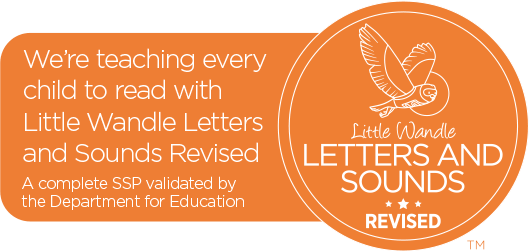Reading and Phonics
Teaching children to read
The early stages of learning to read are so important for your child’s development. We want you as a parent to be as involved as possible in being part of their reading journey. Our aim is to support all parents in gaining confidence to support their child in practising reading at home. We hope you find the guide below useful and please speak to your child’s class teacher if you would like further information.
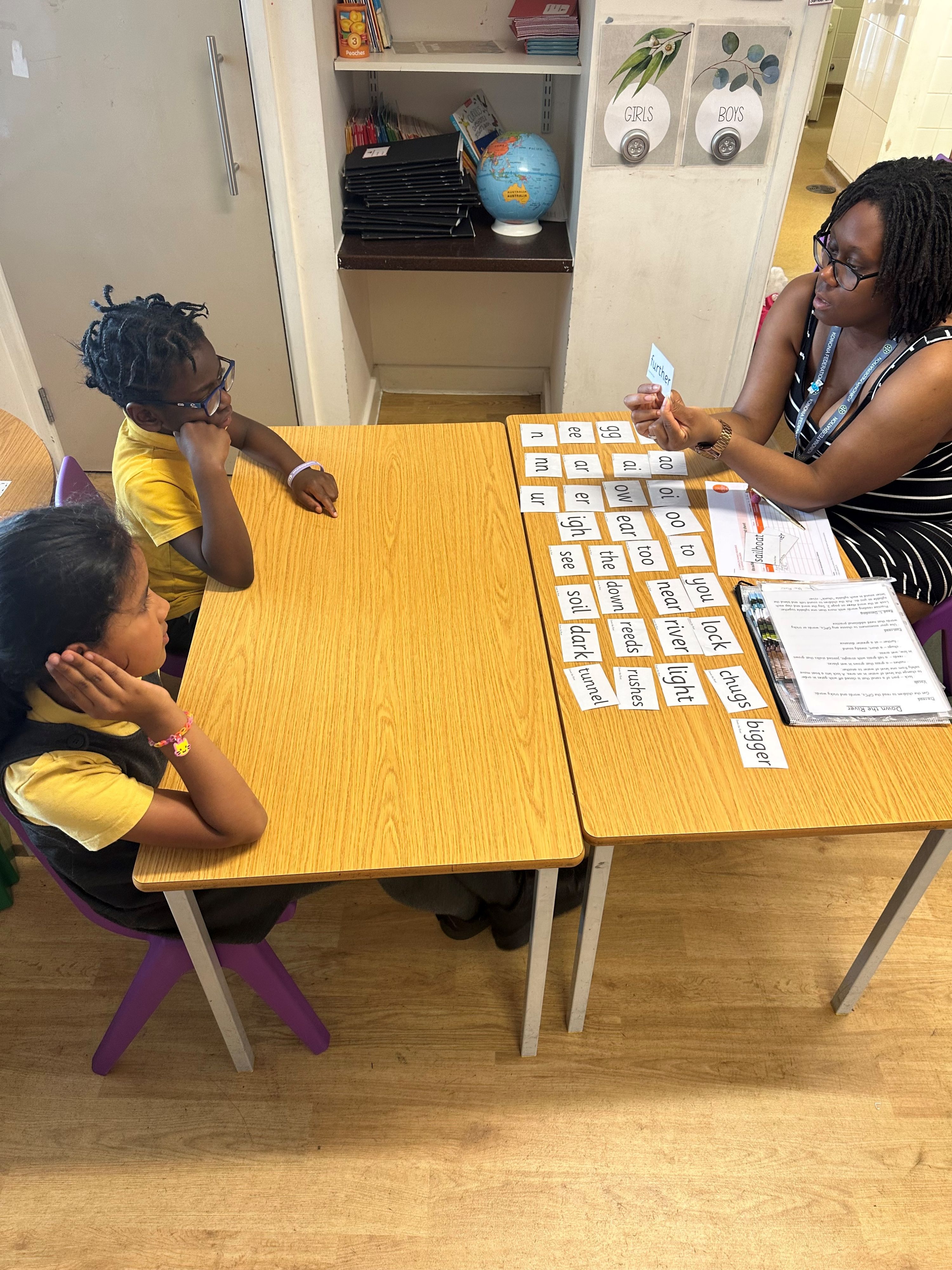
Phonics
At the Koinonia Federation, we use Little Wandle as our systematic synthetic phonics programme for early teaching of reading and writing. Phonics is making connections between the sounds of our spoken words and the letters that are used to write them down. Our phonics teaching follows the cycle of revisit and review, teach, practise and apply. Our aim is to teach children to sound out and blend in order to read words.
CLICK HERE to view the Little Wandle parents workshop presentation
CLICK HERE to view the Little Wandle Phonics Programme Overview for Reception and Year 1
CLICK HERE to view Key Phonics terminology
Revisit and Review
Quick flash review. Each session will begin by rapidly revisiting any sounds that have been previously taught.
Teach and Practise
The session will move onto introducing the new sound and practising pronouncing it. (see below for help guide on this) Within the teach and practise section, children will be given the opportunity to form the sound, match to the letter, oral blending of the sound in words, teacher led blending words and the exposure of tricky words.
Examples of this are:
- Timed reading of GPCs/words/tricky words.
- Reading words quickly: ask children to find the digraph and then read the word fluently.
- Reading longer words using the chunking method. Aim to read some longer words
fluently each time.
- Oral blending throughout the day
- Teacher- led blending throughout the day
Practise and Apply
Children now have the opportunity to play games to use the new sound in action and apply it into reading and writing words.
Blending to read words
Some children learn to blend really quickly, and others take a little longer. If your child is finding it difficult, ask your child’s teacher for ways to help at home.
See the link below for some great ideas:
https://www.littlewandlelettersandsounds.org.uk/resources/for-parents/
Reading and Spelling
This is an example of what the children learn in Year 1. Children learn that there are graphemes that can have different sounds and sounds that can be made with different letters.
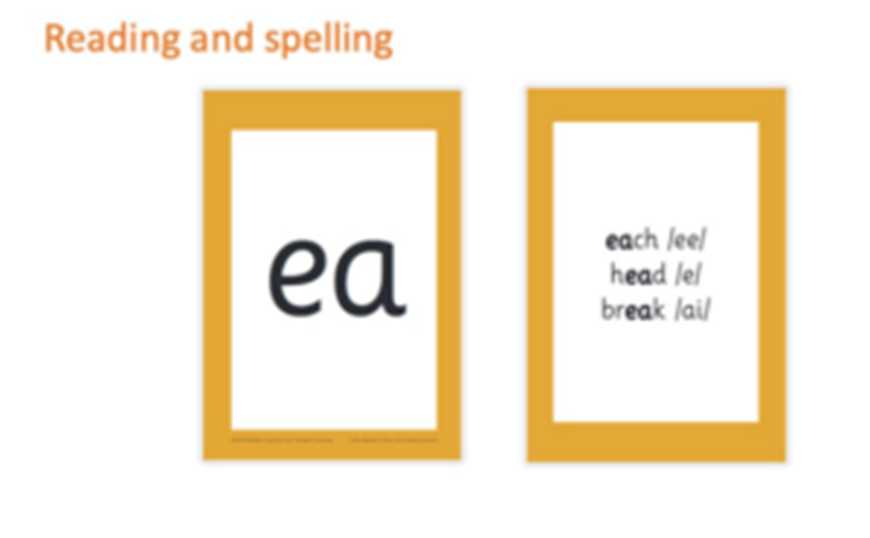
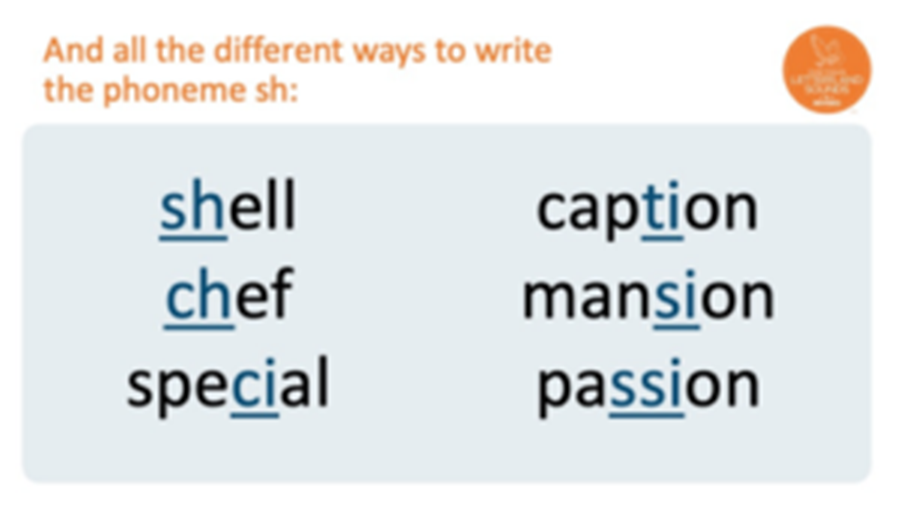
When spelling, children are taught to do the following
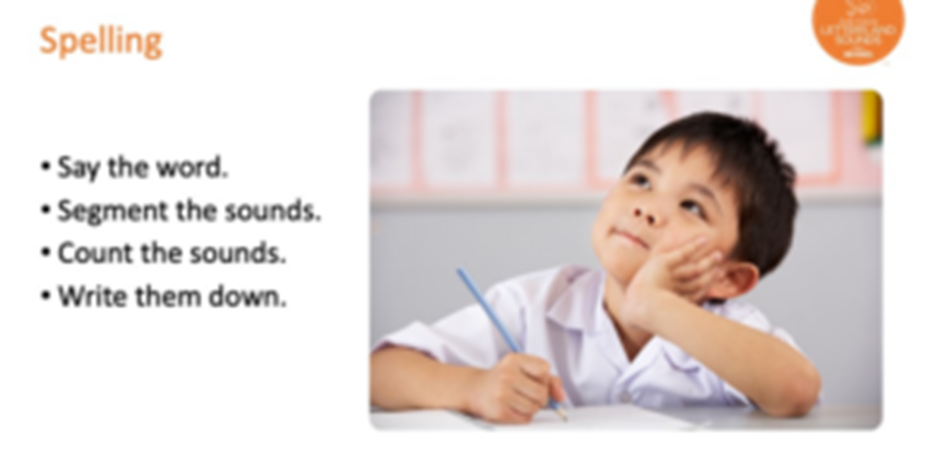
Terminology
Below are words that your children will become familiar with as they are taught the phonics programme.
Grapheme – The letter or letter group which is the sound (phoneme) written down
Phoneme – The smallest unit of sound that can be identified in words
Blending – When reading a word, identify the graphemes in the word and say the corresponding sounds in order to hear the word as a whole. E.g. read cat c- a- t
Segmenting – When spelling a word, break it down into the sounds you hear and write the grapheme for each identified sound. E.g. say shop = writing c- a- t
Decode – Breaking a word down into sounds to be able to read it.
Encode – Breaking a word down into sounds to be able to spell it.
Digraph – When two letters make one sound when they are together. E.g. shop
Trigraph – When three letters make one sound when they are together. E.g. night
Split digraph – When two letters that are “split” by having another letter in the middle of them. E.g. a_e in game or i_e in tide.
Tricky words – These are words that the children won’t have been taught to decode yet as they haven’t learnt the spelling rule. Therefore, they will be taught to read them by sight.
Resources
Below are some resources to help you support your children with early reading and writing at home. Phonics is taught in phases starting in reception. Your child should bring home some resources that inform you of the phase they are on.
How to say Phase 2 sounds:
This is the order we teach the sounds from reception as well as the pronunciation of the sounds.
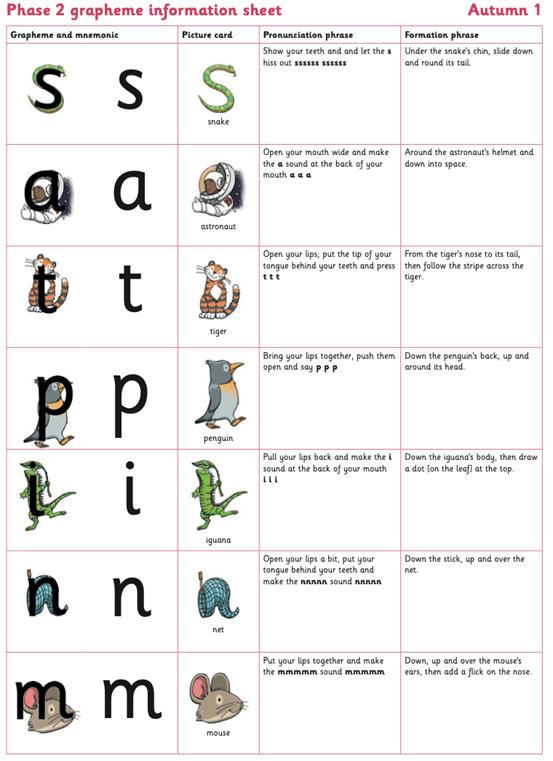
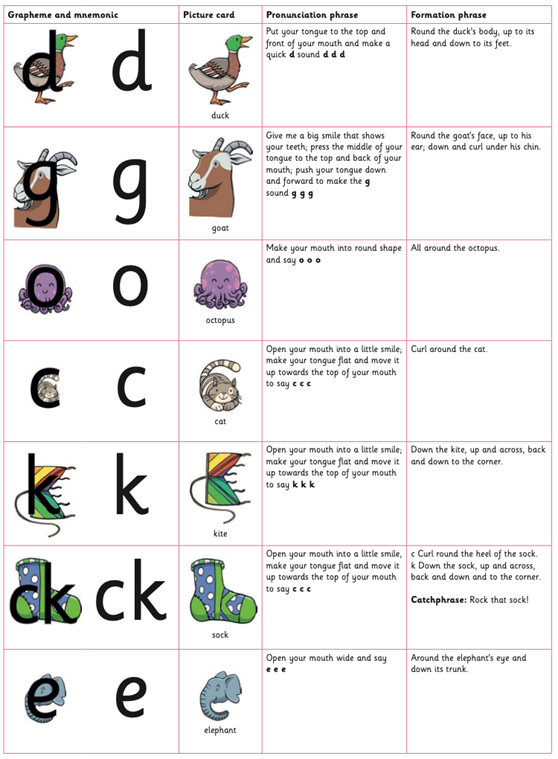
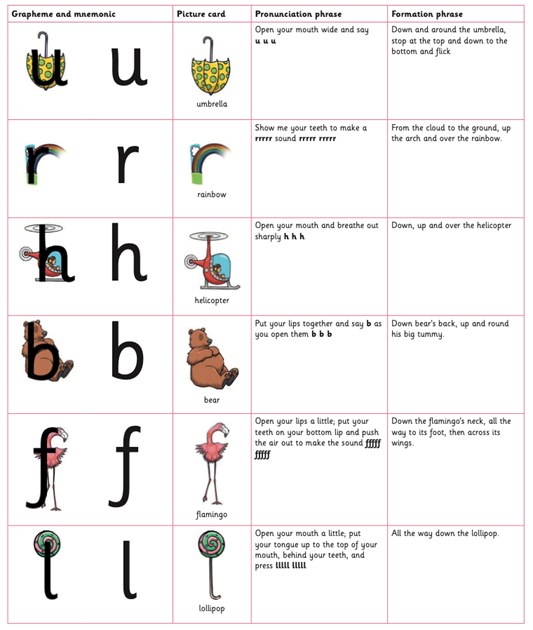
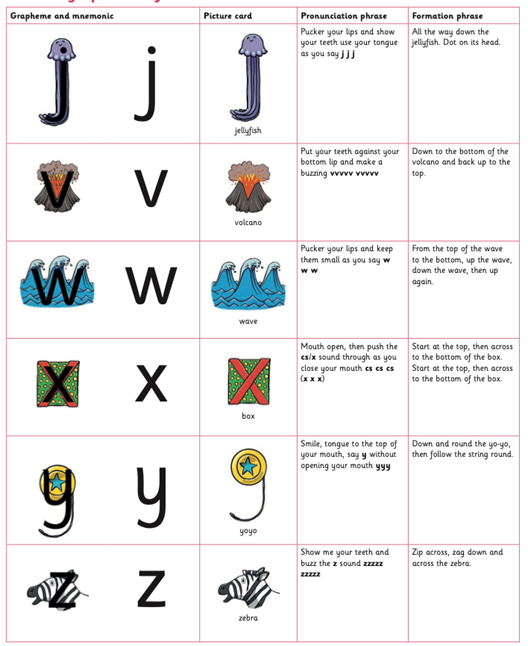
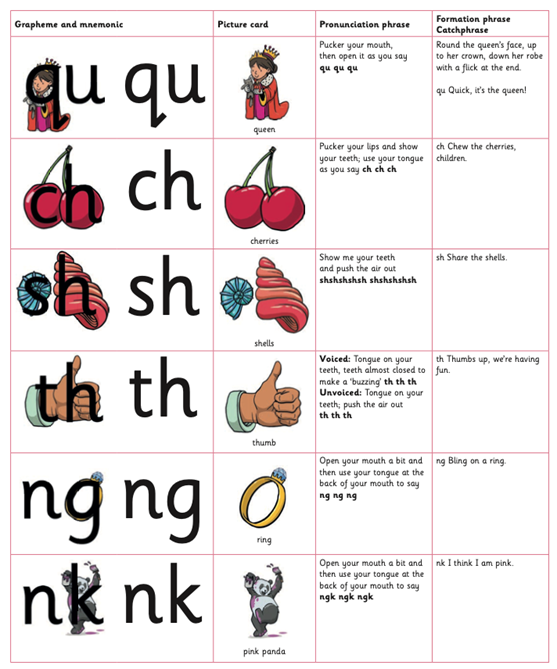
Phase 3 pronunciation
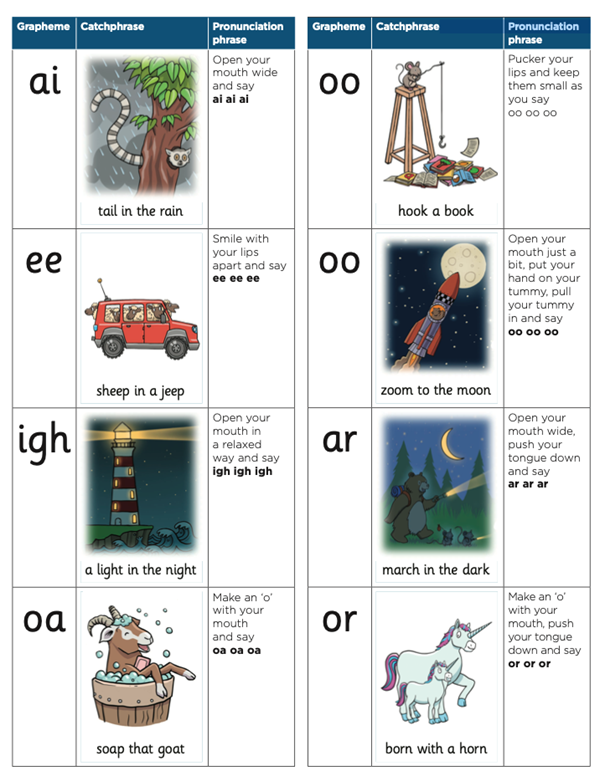
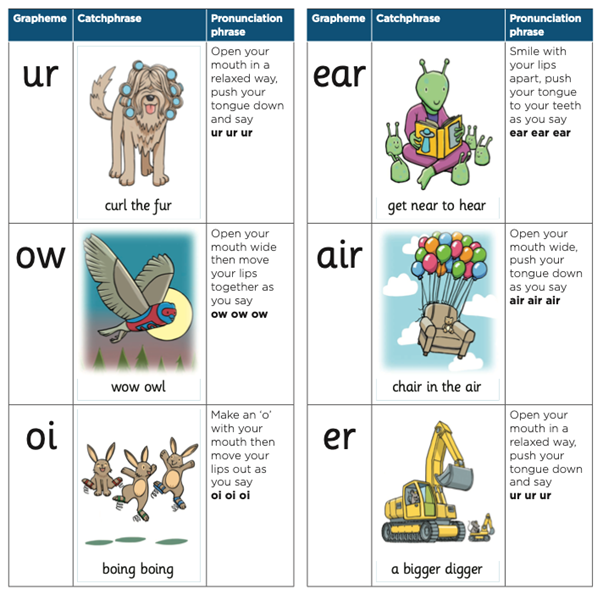
Grapheme mat & Grow the code
This is a grapheme mat that is used in reception and year 1 classes to support their writing. This is useful when translating the sounds to writing. The grow the code has alternative spellings too.
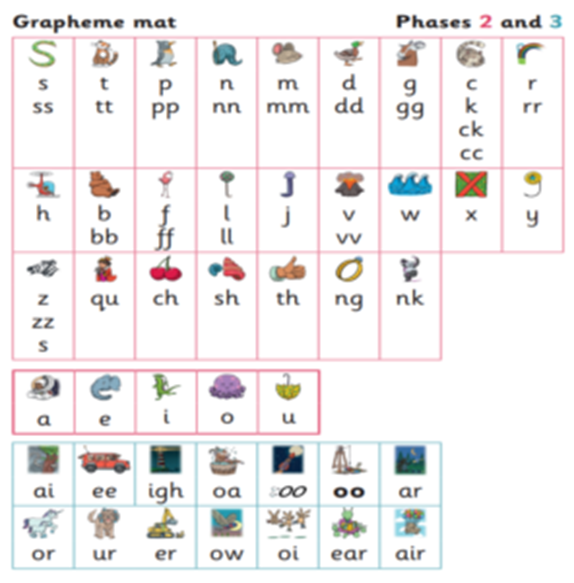
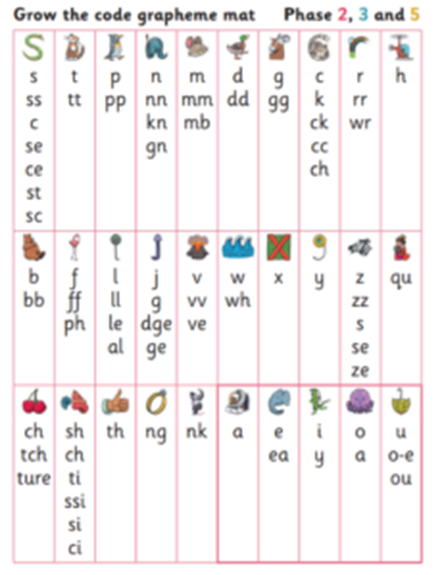
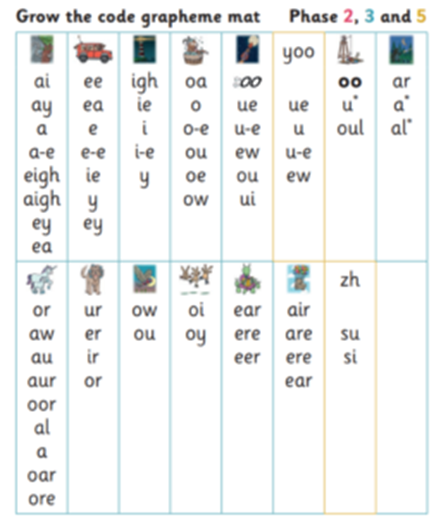
Supporting your child with reading
Reading is our main priority in school. Alongside this, you can have a huge impact on your child’s reading journey by continuing their practice at home.
Your child will have access to two types of reading books:
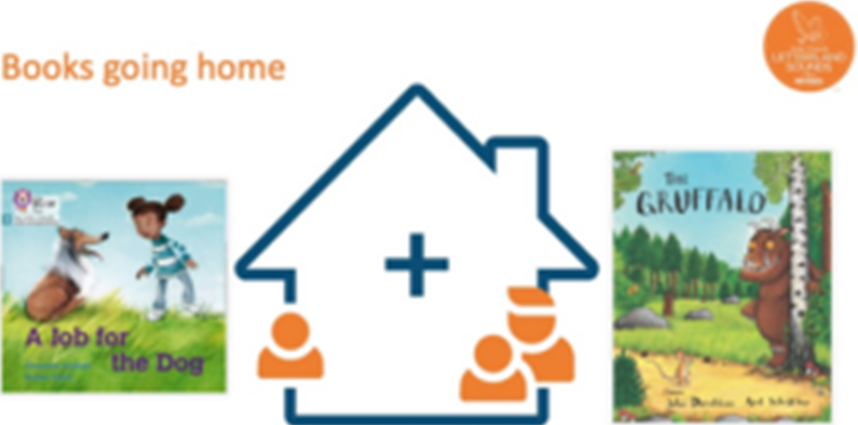
Reading practice book
This will be at the correct phonic stage for your child. Children need regular opportunities to apply the phonics they have learned to reading fully decodable books. To check if your child is reading the correct book, they should be able to:
- Know all the sounds and tricky word in the book.
- Read many of the words automatically
- Only need to stop and sound out around 5% of the words.
This will be dependent on the child’s year group; Reception children will need to sound out more as they start their reading journey. Please listen to your child read their book. Remember to give them lots of praise – celebrate their success! If they can’t read a word, read it to them. After they have finished, talk about the book together.
Sharing book
In order to encourage your child to become a lifelong reader, it is important that they learn to read for pleasure. We will be sending home 1 book which encourages reading for pleasure alongside the designated phonics books. Continue to read books that your child enjoys to them, from your own book collections. Please remember that you shouldn’t expect your child to read every book alone. Discuss the pictures, enjoy the story, predict what might happen next, use different voices for the characters, explore the facts in a non-fiction book. The main thing is that you have fun!
The Collins Big Cat eBook library
To access phonics books suited to what your child is currently reading, please use the E-book library. Our e-book library brings reading to life in school and at home with a range of more than 1000 books matching the phonics phase your child is being taught in school. This range includes fiction and non- fiction texts.
Your child will be able to access books that are fully decodable to their stage of learning and ones that have been assigned by their class teacher.
To access the E-reader please go to: https://ebooks.collinsopenpage.com/
And use the log in provided in your child’s reading record.
We will be sending home physical books alongside E-books. For every book a child has read, they receive 1 tick on their reading bookmark which then gives them a special certificate in our celebration collective worship.
